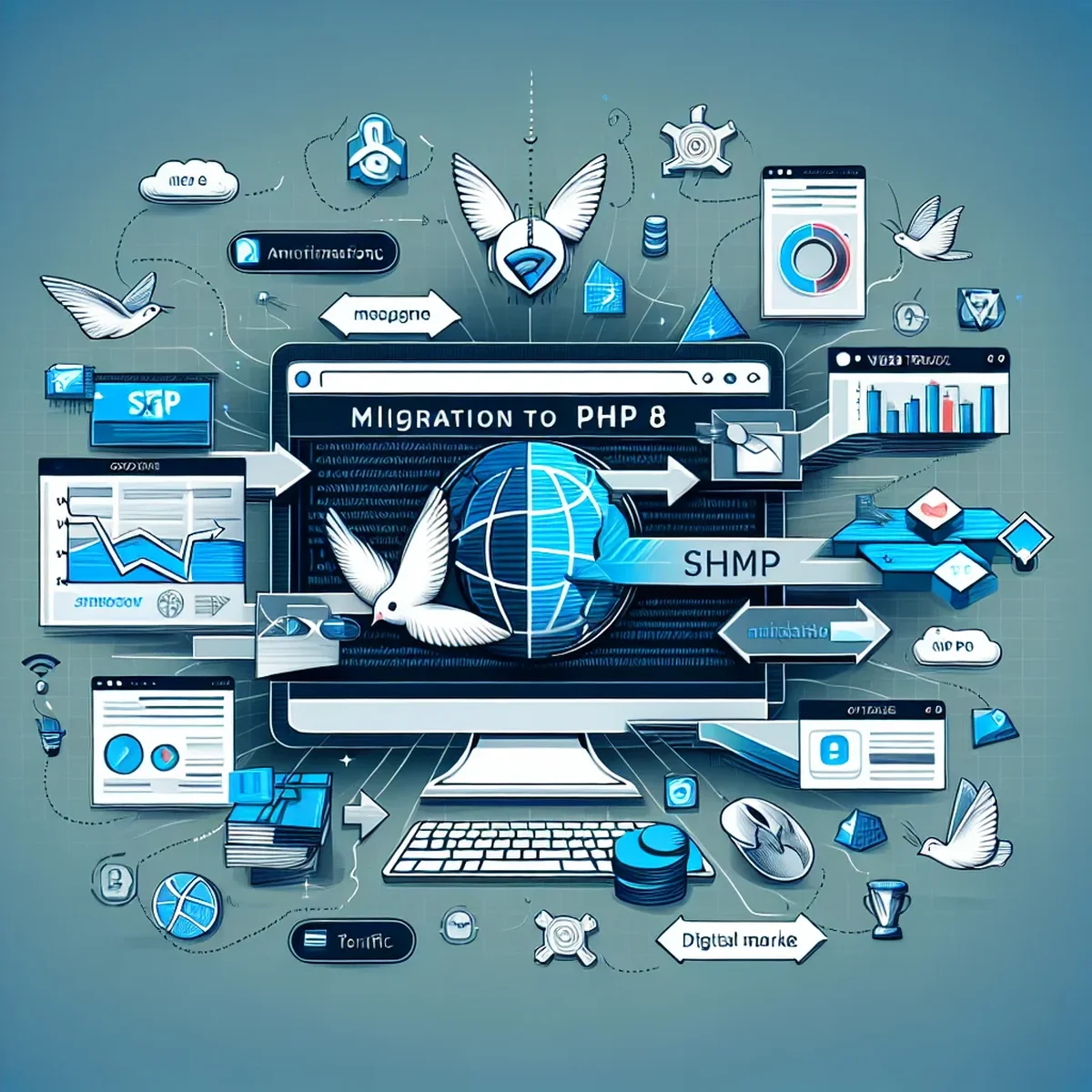Navigating PHP 8 Migration for WordPress Sites: A Comprehensive Guide

Migrating your WordPress site to PHP 8 can significantly enhance its performance and security. However, the process involves careful planning and execution to ensure compatibility and avoid disruptions. This guide will walk you through the necessary steps and considerations for a smooth transition to PHP 8.
Understanding the Implications of PHP 8
PHP 8 introduces a set of new features and optimizations that can have a profound impact on your WordPress site, including:
- Just-In-Time Compilation (JIT): This feature improves performance by compiling PHP code directly into machine language during runtime.
- Attributes: Also known as annotations, these allow for cleaner and more readable code.
- Union Types and Match Expressions: These new language constructs can simplify code logic and improve error handling.
Assessing Your Site’s Readiness
Before initiating the migration, it's crucial to evaluate your site’s current environment and dependencies:
- PHP Compatibility Check: Use tools like the WP Engine PHP Compatibility Checker or the Site Health feature in WordPress to analyze your site for potential issues.
- Theme and Plugin Compatibility: Ensure all your themes and plugins are updated and declared compatible with PHP 8 by their developers.
Planning Your PHP 8 Migration
A well-planned migration is key to minimizing downtime and other potential issues. Consider the following steps:
- Staging Environment: Always perform the upgrade first in a staging environment. This allows you to identify and fix any issues without affecting your live site.
- Backup Your Site: Ensure you have a complete backup of your website, including the database, before proceeding with the migration.
Implementing the Migration
Once you have prepared, follow these steps to migrate your WordPress site to PHP 8:
- Update WordPress Core: Make sure your WordPress installation is up-to-date, as newer versions are better optimized for the latest PHP.
- Switch to PHP 8: Change the PHP version through your hosting control panel. Monitor the site’s performance and functionality.
- Resolve Any Issues: Address any errors or warnings generated. This may involve tweaking code, updating custom plugins, or consulting with theme developers.
Post-Migration Checklist
After migrating, perform comprehensive testing to ensure everything runs smoothly:
- Check Site Functionality: Test all features of your site, including forms, checkout processes, and user login areas.
- Monitor Performance Metrics: Keep an eye on website speed and resource usage. Compare these metrics with those recorded before the migration to gauge the impact of PHP 8.
- Review Error Logs: Regularly check for new warnings or errors that could indicate unresolved compatibility issues.
Conclusion
Upgrading to PHP 8 is a strategic move that can improve your WordPress site's efficiency and security. By following this detailed guide, you can ensure a successful migration, maintaining or even enhancing your site's performance and user experience. Remember, while the process does require thorough preparation and testing, the benefits of PHP 8 will ultimately justify the effort.
FAQ
- What are the primary benefits of migrating to PHP 8 for WordPress sites?
- The primary benefits include improved performance, enhanced security features, and access to new, more efficient coding structures and functions.
- How can I ensure my WordPress plugins and themes are compatible with PHP 8?
- Start by updating all themes and plugins to their latest versions. Then, use the WordPress Site Health tool or PHP compatibility checker plugins to assess and resolve any compatibility issues.
- What should I do if my site experiences issues after upgrading to PHP 8?
- Revert to your previous PHP version, and conduct a thorough review of error logs and compatibility reports. Address the issues in a staging environment before attempting another upgrade.